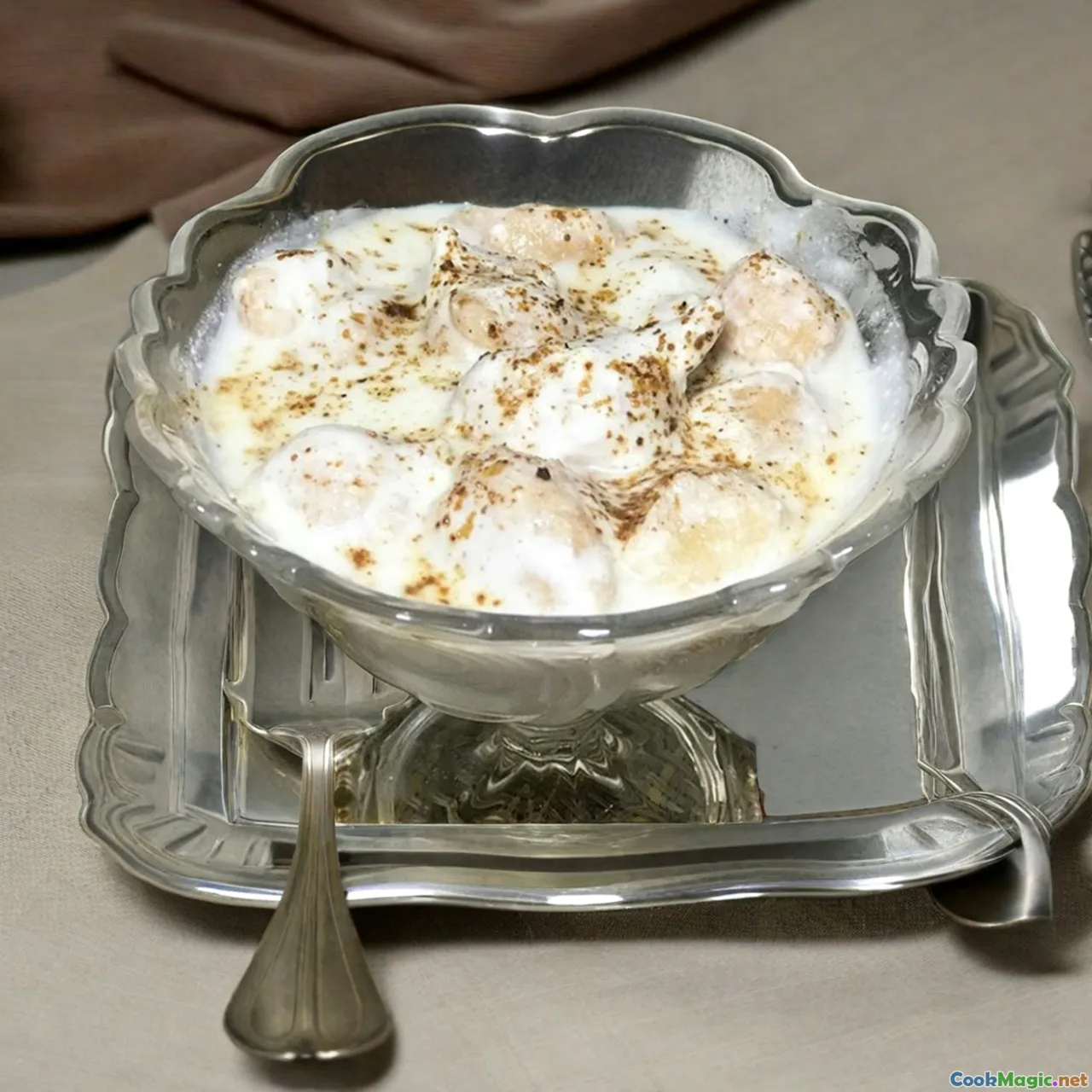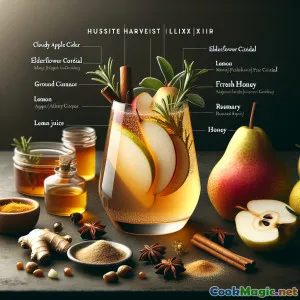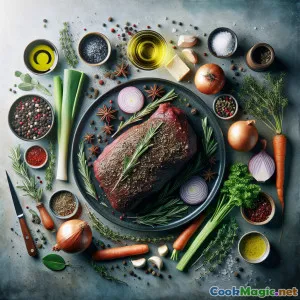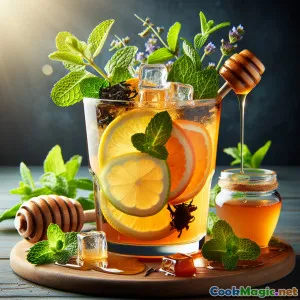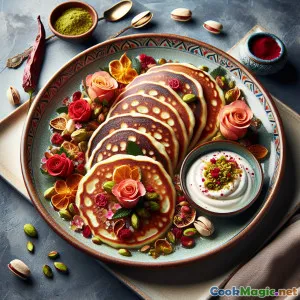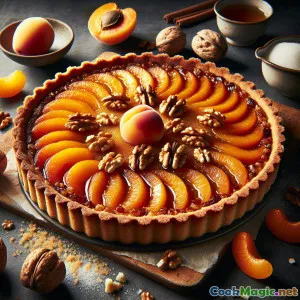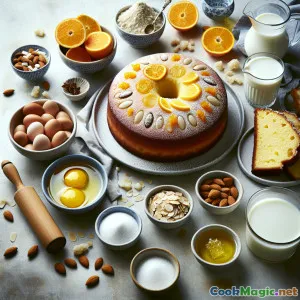
Pirottini di Crema di Linfa di Betulla & Orzo: Un Piacere Inglese
(Birch Sap & Barley Cream Pots: An English Delight)
(0 Recensioni)0
1,015
luglio 14, 2025
Segnala un problema
Ingredienti
-
60 grams Orzo perlato
(Risciacquato sotto acqua fredda)
-
300 ml Latte intero
(Cucinare l'orzo)
-
200 ml Sapori di betulla
(Fresco o in bottiglia; può essere sostituito con acqua di cocco dal sapore più delicato)
-
250 ml Panna doppia
(Per ricchezza e consistenza morbida)
-
60 grams Zucchero semolato
(Regola a piacere a seconda della dolcezza della linfa di betulla)
-
3 large Tuorli d'uovo
(A temperatura ambiente)
-
1 whole Baccello di vaniglia
(Dividi e raschia i semi, o usa 1 cucchiaino di pasta di vaniglia)
-
1/4 tsp Sale marino
(Esalta il sapore)
-
2 tsp Miele
(Fioritura selvatica inglese, per condire)
-
20 grams Nocciole tostate
(Appuntito grossolanamente, per decorare)
(Risciacquato sotto acqua fredda)
(Cucinare l'orzo)
(Fresco o in bottiglia; può essere sostituito con acqua di cocco dal sapore più delicato)
(Per ricchezza e consistenza morbida)
(Regola a piacere a seconda della dolcezza della linfa di betulla)
(A temperatura ambiente)
(Dividi e raschia i semi, o usa 1 cucchiaino di pasta di vaniglia)
(Esalta il sapore)
(Fioritura selvatica inglese, per condire)
(Appuntito grossolanamente, per decorare)
Nutrizione
- Porzioni: 4
- Dimensione Porzione: 1 ramekin (150ml)
- Calories: 350 kcal
- Carbohydrates: 33 g
- Protein: 7 g
- Fat: 21 g
- Fiber: 2.5 g
- Sugar: 13 g
- Sodium: 70 mg
- Cholesterol: 134 mg
- Calcium: 115 mg
- Iron: 1.2 mg
Istruzioni
-
1 - Cuocere l'orzo con latte:
Sciacqua l’orzo perlato e aggiungilo a una piccola casseruola con latte intero. Porta a un leggero simmer e cuoci, senza coperchio, finché l’orzo non sarà molto tenero, circa 25 minuti. Mescola regolarmente per evitare che si attacchi. Metti da parte e lascia raffreddare leggermente.
-
2 - Frullare per Cremoso:
Versa l'orzo cotto e il latte rimanente in un frullatore. Frulla bene fino a ottenere una consistenza il più liscia possibile. Passa attraverso un colino a maglia fine per rimuovere eventuali residui di guscio di orzo per una consistenza più setosa.
-
3 - Infondere la linfa di betulla e la crema:
In una pentola pulita, combina il linfa di betulla, la panna doppia, la miscela di orzo filtrato e i semi della bacca di vaniglia (se usati). Riscalda delicatamente, mescolando costantemente, fino al punto di vapore ma senza portare a ebollizione.
-
4 - Preparare i tuorli d'uovo e lo zucchero:
Nel frattempo, sbatti i tuorli d'uovo con lo zucchero a velo e il sale marino in una ciotola grande fino a che siano più chiari e leggermente addensati.
-
5 - Condire e Mescolare:
Versare lentamente circa un terzo della crema calda di betulla- orzo nel miscuglio di uova mentre si mescola costantemente. Una volta temperato, reintegra il composto di uova nella padella con il resto del liquido caldo.
-
6 - Cuocere la Base di Crema Pasticcera:
A fuoco basso, sbatti continuamente la crema pasticcera finché non si addensa abbastanza da ricoprire una spatola (circa 82°C se si usa un termometro). Non lasciar bollire.
-
7 - Raffreddare nei ramekins:
Dividi in quattro ramekin da 150 ml. Lascia raffreddare a temperatura ambiente, poi copri e metti in frigorifero per almeno 2 ore fino a quando si rassoda leggermente.
-
8 - Guarnire e Servire:
Per servire, versare un po' di miele inglese sopra e cospargere con nocciole tostate tritate, se desiderato. Servire freddo e cremoso.
Sciacqua l’orzo perlato e aggiungilo a una piccola casseruola con latte intero. Porta a un leggero simmer e cuoci, senza coperchio, finché l’orzo non sarà molto tenero, circa 25 minuti. Mescola regolarmente per evitare che si attacchi. Metti da parte e lascia raffreddare leggermente.
Versa l'orzo cotto e il latte rimanente in un frullatore. Frulla bene fino a ottenere una consistenza il più liscia possibile. Passa attraverso un colino a maglia fine per rimuovere eventuali residui di guscio di orzo per una consistenza più setosa.
In una pentola pulita, combina il linfa di betulla, la panna doppia, la miscela di orzo filtrato e i semi della bacca di vaniglia (se usati). Riscalda delicatamente, mescolando costantemente, fino al punto di vapore ma senza portare a ebollizione.
Nel frattempo, sbatti i tuorli d'uovo con lo zucchero a velo e il sale marino in una ciotola grande fino a che siano più chiari e leggermente addensati.
Versare lentamente circa un terzo della crema calda di betulla- orzo nel miscuglio di uova mentre si mescola costantemente. Una volta temperato, reintegra il composto di uova nella padella con il resto del liquido caldo.
A fuoco basso, sbatti continuamente la crema pasticcera finché non si addensa abbastanza da ricoprire una spatola (circa 82°C se si usa un termometro). Non lasciar bollire.
Dividi in quattro ramekin da 150 ml. Lascia raffreddare a temperatura ambiente, poi copri e metti in frigorifero per almeno 2 ore fino a quando si rassoda leggermente.
Per servire, versare un po' di miele inglese sopra e cospargere con nocciole tostate tritate, se desiderato. Servire freddo e cremoso.
Ulteriori informazioni su: Pirottini di Crema di Linfa di Betulla & Orzo: Un Piacere Inglese
Birch Sap and Barley Cream Pots
Summary
This wholly original recipe for Birch Sap and Barley Cream Pots captures the gentle awakening of an English spring in a delicate, creamy dessert bowl. Combining the subtle, natural sweetness of birch sap with the nutty, old-world flavors of barley, and elevating it all with rich dairy and softly set custard, this dish blurs the lines between modern British innovation and age-old traditions. Its unassuming, creamy aesthetics hint at something more interesting upon first spoonful—an earthy complexity and layers of silky, gentle sweetness.
History and Cultural Significance
Birch sap, gathered from centuries-old woodland traditions, was once a celebrated ingredient in the Northern Hemisphere—tapped for just a few short weeks each spring. In the UK, though largely forgotten in mainstream cuisine, folklore remembers birch sap as a rejuvenating 'British tonic,' sometimes fermented into wine or mixed into healing concoctions. Barley’s role as a staple cereal can be traced from Neolithic times to roots in rustic British desserts and hearty stews, symbolizing resilience, comfort, and an affinity with the landscape.
Combining birch sap with barley in a creamy custard was inspired by traditional milk puddings and contemporary farmhouse desserts, but here given a new voice—bridging foraged, historic flavors and classic dessert typology.
Unique Aspects and Personal Notes
Birch Sap and Barley Cream Pots stand out not just for their writeup of “wild sophistication:”
-
The birch sap brings unique complexity, lightly floral, slightly sweet, unlike anything sugar or syrup could impart. Using birch sap as a base (where you might otherwise reach for milk, water, or coconut water) coaxes out woodsy, sappy nuances and gently perfumes the dessert.
-
Barley lends nutty undertones and provides a textural base for the custard when rendered ultra-smooth. It bulks the cream without heaviness, forming the bridge between tradition and elegance.
-
The slow, low cook and careful tempering of egg yolks ensure an unctuous, gentle set—not quite a thick jelly, more opulent than most milk puddings, yet firmer than classic pouring custard.
-
Lightly sweetened, with a dash of honey to serve, it needs little embellishment: a contrast of roughly chopped hazelnuts highlights the woodland origins and counters the creaminess, while a use of vanilla is purely optional—leaning into (or away from) the pure birch-milk aroma as you wish.
Tips & Notes
- Sourcing birch sap can be the main barrier; look for it bottled online or at specialty food stores during spring. If unavailable, slightly diluted maple water or even coconut water makes a gentle and neutral substitute, though each lacks pure birch nuance.
- The barley cream achieves true silkiness by thorough blending and straining—don’t rush this part.
- If desired, infuse other seasonal wild herbs (like meadowsweet or elderflower) into the cream just before straining, amplifying the wild character of the dessert.
- Keeping the yolk-cream mixture below boiling (82°C/180°F) prevents curdling, giving that opulent texture prized in classic pots de crème.
- These set softly for an impressive table finish but keep hands-off when cooling; the chilling step is essential to their success.
Variations and Serving
You may experiment with nut toppings—try toasted pecans or almonds. Birch syrup (used with restraint) works as a garnish for darker caramel bitterness, or swap in seasonal berries and a little buttermilk for a tart contrast. Best served foraged-ingredient dinners, a woodland afternoon tea, or simply to evoke lush English meadows wherever you are. If serving to guests, the story of birch sap’s scarcity and tradition could become the star conversation.
This unique dessert pot manages to be both subtly wild and beautifully refined—an unmistakable taste of the British landscape, reimagined for today’s palate.


